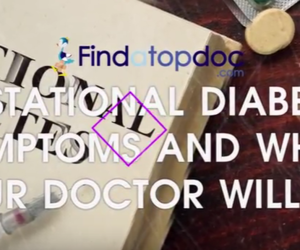As with all medicines, the risks must be compared to how much a medication will help you. This is a decision that you and your doctor will make together. For this medication, there are many things that need to be considered:
Allergies:
Inform your doctor if you have ever had an allergic reaction to doxorubicin or to any other medications. It is also important to inform your doctor of any non-medicine allergies such as foods, dyes, preservatives or animals.
Pediatric:
No appropriate studies have been performed on the relationship of age to the effects of this medication in children. Safety and efficacy have not been established.
Geriatric:
Up-to-date studies have not shown any problems specific to the elderly that would limit the use of this medication in the elderly population.
Pregnancy:
This medication is listed as Pregnancy Category C. This means that animal studies have shown an adverse effect and no studies have been performed on pregnant women OR there are no adequate studies on pregnant animals and pregnant women.
Breastfeeding:
There are no up-to-date studies in women for determining infant risk when using this medication while breastfeeding. Weigh the potential risks with the benefits before taking this medication while breastfeeding.
Drug Interactions:
Certain medications should not be used together. However, in certain cases, two medications may be used together, even if an interaction might occur. In these cases, your doctor may want to change your dose or take other precautions. When taking this medication, it is important that you inform
your doctor if you are taking any of the medications listed below. The following interactions were selected on the basis of potential significance and are not all-inclusive.
Using this medication with any of the following medication is not recommended, but may be unavoidable in some cases. Your doctor may make the decision not to treat you with this medication or change some of the other medications you take:
- Balofloxacin
- Besifloxacin
- Ciprofloxacin
- Enoxacin
- Fleroxacin
- Flumequine
- Gatifloxacin
- Gemifloxacin
- Ifosfamide
- Insulin
- Insulin Aspart, Recombinant
- Insulin Bovine
- Insulin Degludec
- Insulin Detemir
- Insulin Glulisine
- Insulin Lispro, Recombinant
- Lanreotide
- Levofloxacin
- Lomefloxacin
- Moxifloxacin
- Nadifloxacin
- Nifedipine
- Norfloxacin
- Octreotide
- Ofloxacin
- Pasireotide
- Pazufloxacin
- Pefloxacin
- Piperaquine
- Pixantrone
- Prulifloxacin
- Rufloxacin
- Sparfloxacin
- Tolvaptan
- Tosufloxacin
Using this medication with any of the following medications may increase your risk of side effects. However, using both medications may be the best treatment for you. If both medications are prescribed together, your doctor may change the dose or how often you take one or both medications:
- Abiraterone
- Acebutolol
- Atenolol
- Atorvastatin
- Betaxolol
- Bisoprolol
- Bitter Melon
- Carteolol
- Carvedilol
- Celiprolol
- Esmolol
- Fenugreek
- Furazolidone
- Gemfibrozil
- Glucomannan
- Guar Gum
- Iproniazid
- Isocarboxazid
- Ketoconazole
- Labetalol
- Levobunolol
- Linezolid
- Methylene Blue
- Metipranolol
- Metoprolol
- Moclobemide
- Nadolol
- Nebivolol
- Nialamide
- Nilotinib
- Oxprenolol
- Penbutolol
- Phenelzine
- Pindolol
- Practolol
- Procarbazine
- Propranolol
- Psyllium
- Rasagiline
- Rifampin
- Safinamide
- Selegiline
- Sotalol
- Timolol
- Topiramate
- Tranylcypromine
Other Interactions:
Certain medications should not be used while eating, or while eating certain foods in case of negative interactions. Using alcohol or tobacco with certain mediations may also cause negative interactions. Talk with your doctor about the use of your medication with food, alcohol or tobacco.
Other Medical Problems:
Pre-existing medical problems may affect the use of this medication. Be sure to tell your doctor if you have any other medical problems, especially:
- Alcohol (excessive use)
- Gallbladder stones
- Pancreas problems, history of - Use with caution. May increase risk for getting pancreatitis (swelling and inflammation of the pancreas).
- Angioedema (swelling of the face, lips, tongue, throat, arms, or legs), history with other dipeptidyl peptidase-4 (DPP-4) inhibitors - Use with caution. May increase the risk of this condition occurring again.
- Bladder cancer
- Diabetic ketoacidosis (high ketones and acid in the blood)
- Heart failure
- Kidney disease
- Type 1 diabetes - Should not be used in patients with these conditions.
- Diabetic macular edema (swelling of the back of the eye)
- Edema (fluid retention)
- Liver disease - Use with caution. May make these conditions worse.
- Fragile bones (especially in women) - Use with caution. This medicine may increase the risk for fractures.
- Kidney disease - Use with caution. The effects may be increased because of slower removal of the medicine from the body.
Only take this medication as directed by your doctor. Do not take more, less or for a longer or shorter period of time than your doctor tells you. Your dose may be changed several times in order to discover what dose works best for you.
This medication comes with a patient information brochure. It is very important that your read this information. Ask your doctor if you have any questions.
It is important to carefully follow the special meal plan your doctor gives you. This is the most important part of controlling your diabetes and is necessary for the medication to work properly. Exercise regularly and test your blood or urine sugar levels as directed.
Swallow the tablet whole. Do not crush, break or chew it. You can take this medication with or without food.
Dosing:
Different patients will be given a different dose of this medication based on the strength of the medication. The number of doses you take each day, the time between doses and the length of time you take this medication depends on the reason you are taking this medication. The following information only includes the average dose of this medication. If your dose is different, do not
change it without first speaking to your doctor.
- Adults - Start with one tablet (either alogliptin 25mg and pioglitazone 12mg or alogliptin 25mg and pioglitazone 30mg) once a day. Your doctor may adjust your dose as needed. The dose is not normally more than alogliptin 25mg and pioglitazone 45mg per day.
- Children - Use is not recommended.
Missed dose:
If you miss a dose of this medication, take it as soon as possible. If it is almost time for your next dose, skip the missed dose and resume your normal dosing schedule. Do not double dose.
Storage:
Store this medication in a closed container at room temperature. Keep it away from heat, moisture and direct light. Do not freeze.
Keep our of the reach of children
Do not keep expired medication or medication you no longer need. Ask your doctor how to dispose of any medication you do not use.
It is very important that your doctor checks in with the you often while you are receiving this medication to make sure that it is working properly. Blood or urine tests may be needed to check for unwanted effects.
Certain women may be at an increased risk of pregnancy while taking this medication. If you had problems ovulating and had irregular periods in the past, this medication may cause you to ovulate. This could increase your chance of becoming pregnant. If you are a woman of childbearing potential, you should discuss birth control options with your doctor.
If you are rapidly gaining weight, having shortness of breath, chest pain or discomfort, extreme fatigue or weakness, irregular breathing, irregular heartbeat (arrhythmias) or excessive swelling of the hands, wrist, ankles or feet, inform yoru doctor immediately. These may be signs of a heart problem or your body retaining too much water.
This medication may cause serious and life-threatening allergic reactions such as anaphylaxis, angioedema or certain skin conditions such as Stevens-Johnson syndrome. These conditions require immediate emergency medical attention.
Inform your doctor immediately if you experience a rash, itching, blistering, peeling or loose skin, fever or chills, difficulty breathing or swallowing or any swelling of the hands, face, mouth or throat while using this medication.
This medication may increase the risk for bone fractures in women. Ask yoru doctor about ways to keep your bones strong to help prevent fractures
Pancreatitis (swelling and inflammation of the pancreas) may occur while using this medication. Inform your doctor immediately if you have a sudden and severe stomach pain, chills, constipation, nausea, vomiting, loss of appetite, fever or lightheadedness.
Inform your doctor immediately if you have pain or tenderness in the upper stomach, pale stool, dark urine, loss of appetite, nausea, vomiting or yellow eyes or skin (jaundice). These may be signs of a serious liver problem.
This medication may cause hypoglycemia (low blood sugar). Hypoglycemia can also occur if you delay or miss a meal or snack, exercise more than usual, drink alcohol, are unable to eat due to nausea or vomiting, take certain medications or take alogliptin with another type of diabetes medication (insulin, glipizide, glyburide, metformin or pioglitazone).
Symptoms of hypoglycemia must be treated before they cause unconciousness. The symptoms of hypoglycemia vary from person to person. It is important that you learn which symptoms you have so you can treat it quickly.
Symptoms of hypoglycemia include anxiety attacks, behaviour changes similar to being drunk, blurred vision, cold sweats, confusion, cool, pale skin, difficulty thinking, drowsiness, excessive hunger, fast heartbeat (tachycardia), continuous headaches, nausea, nervousness, nightmares, restless sleep, shakiness, slurred speech or unusual fatigue or weakness.
If symptoms of hypoglycemia occur, check your blood sugar level. If you have hypoglycemia, eat glucose tablets or gel, corn syrup, honey or sugar cubes or drink fruit juice, non-diet soft drinks or sugar dissolved in water. Glucagon is a medication taht is used in emergency situations when severe symptoms such as seizures or unconsciousness occur. Have a glucagon kit available, along with a syringe and needle and know how to use it. The members of your family should also know how to use glucagon.
Hyperglycemia (high blood sugar) may occur if you do not take enough or skip a dose of your medication, overeat or do not follow your diet plan, have a fever or infection or do not exercise as much as usual.
Symptoms of hyperglycemia include blurred vision, drowsiness, dry mouth, flushed dry skin, fruit-like breath odor, increased urination (frequency and amount), loss of appetite, sleepiness, stomachache, nausea or vomiting, fatigue, difficulty breathing (rapid and deep), unconsciousness or unusual thirst (polydipsia).
If symptoms of hyperglycemia occur, check your blood sugar level and call your doctor for instructions.
There may be a time when you need emergency help for a problem caused by your diabetes. It is important to be prepared for these emergencies. It is a good idea to wear a medical ID bracelet or neck chain at all times. Carry an ID card in your wallet or purse that says you have diabetes with a list of all your medications.
It is important to inform the doctor in charge of any medical or surgical procedures that you are taking this medication.
This medication may cause severe and disabling joint pain. Inform your doctor immediately if you have severe joint pain while using this medication.








